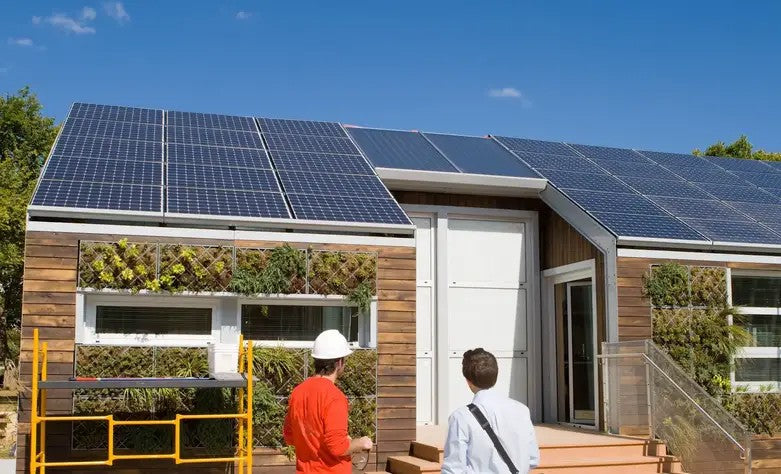
As solar energy becomes increasingly popular among homeowners and businesses, understanding the functionality and maintenance of solar charge controllers is essential. Solar charge controllers play a vital role in regulating the flow of electricity from solar panels to batteries, ensuring optimal charging and preventing overcharging. However, occasional issues may arise, requiring a reset to restore the controller's proper functioning. In this article, we will guide you through the step-by-step process of resetting solar charge controllers and address common problems that a reset can fix.
1. How to Soft Reset Solar Controllers
A soft reset is a simple troubleshooting step that can resolve minor issues without impacting the configuration settings of the solar charge controller. Follow these steps to perform a soft reset:
Step 1: Turn off the solar charge controller: Locate the power switch or disconnect the controller from the battery and solar panel.
Step 2: Disconnect external power sources: If your solar charge controller is connected to other devices or systems, disconnect them to isolate the controller.
Step 3: Wait for a few minutes: Allow the controller to remain disconnected for approximately 5 minutes to ensure any residual charge dissipates.
Step 4: Reconnect the controller: Reconnect the solar charge controller to the battery and solar panel, ensuring proper connections.
Step 5: Power on the controller: Turn on the power switch or reconnect any external power sources.
2. How to Hard Reset Solar Controllers
A hard reset is a more extensive procedure that restores the solar charge controller to its factory default settings. This process erases all customized configurations, so it should only be used when other troubleshooting methods fail. Here's how to perform a hard reset:
Step 1: Identify the reset button: Look for a small button labeled "Reset" or "Factory Reset" on the controller. It is usually located on the front panel or rear of the device.
Step 2: Press and hold the reset button: Using a paperclip or a small tool, press and hold the reset button for about 10 to 15 seconds.
Step 3: Release the reset button: Once the time has elapsed, release the reset button.
Step 4: Power cycle the controller: Turn off the power supply to the controller and disconnect any external power sources. After a few seconds, reconnect the power supply.
Step 5: Reconfigure the controller: After the hard reset, you will need to reconfigure the controller's settings according to your specific requirements.
3. How to Reset an MPPT Charge Controller
MPPT (Maximum Power Point Tracking) charge controllers are widely used in solar installations due to their efficiency in maximizing power output. Resetting an MPPT charge controller follows a similar process to soft and hard resets, with a few additional steps:
Step 1: Disconnect the PV array: Turn off the solar panels by disconnecting the array from the charge controller.
Step 2: Disconnect the battery: Disconnect the battery from the charge controller.
Step 3: Wait for a few minutes: Allow the charge controller to discharge any residual energy by keeping it disconnected for approximately 5 minutes.
Step 4: Reconnect the battery: Reconnect the battery to the charge controller, ensuring proper connections.
Step 5: Reconnect the PV array: Reconnect the solar panels to the charge controller, ensuring proper connections.
Step 6: Power on the controller: Turn on the power switch or reconnect any external power sources.
4. When Should You Reset Solar Controllers?
Resetting a solar charge controller should be considered when you encounter the following scenarios:
- The charge controller is unresponsive or not displaying any information.
- The battery is not charging or discharging properly.
- The solar panels are not producing power as expected.
- The controller is displaying error codes or abnormal behavior.
5. Should You Do a Hard or Soft Reset?
Choosing between a hard or soft reset depends on the severity of the issue and the extent of troubleshooting required. Generally, start with a soft reset and proceed to a hard reset if the problem persists. Remember, a hard reset erases all custom settings, so it should be a last resort.
6. What Solar Controller Problems Can a Reset Fix?
A reset can resolve various solar controller issues, including:
- Software glitches and temporary malfunctions.
- Firmware update failures.
- Configuration conflicts.
- Incorrect parameter settings.
- Communication errors between the charge controller and other system components.
Conclusion
Resetting a solar charge controller is a valuable troubleshooting technique that can help restore optimal performance. By following the step-by-step instructions provided in this article, you can perform both soft and hard resets, and even reset an MPPT charge controller. Remember to choose the appropriate reset method based on the severity of the issue. Regular maintenance and monitoring of your solar energy system, including the charge controller, will ensure maximum efficiency and longevity of your investment in renewable energy.


0 Kommentare